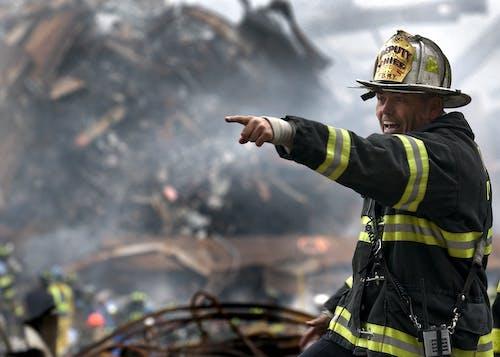How to Prepare for an Emergency: A Guide to Disaster Preparedness

Disasters can strike at any time. Feeling powerless is understandable in the face of disasters, but what if you could replace that sense of helplessness with preparedness, strength, and resilience? That’s precisely what this guide aims to achieve, equipping you with the knowledge, tools, and strategies needed to navigate the stormy seas of unexpected crises and steer your life back to the shore of safety.
- Laying the Foundation: Understanding Emergencies and Disasters
The preparedness journey begins with a solid understanding of the terrain. Emergencies and disasters, from natural phenomena like hurricanes, earthquakes, and floods, to man-made crises like fires or hazardous material spills, have a universal element of unpredictability. Understanding these risks and their potential impacts is crucial in our quest for readiness. A clear comprehension of such situations equips us with the tools to face them and fosters a sense of control amidst the chaos. This understanding is not limited to personal experiences or local events; it’s a worldwide concern. For those who want to dive deep into this field, an academic course like a masters of emergency management online can offer an exhaustive understanding of the disaster spectrum, providing you with comprehensive knowledge to face any emergency confidently.
- Your Safety Compass: Identifying the Risks
Once we’ve grasped the nature of emergencies and disasters, our next step is identifying our personal and local risks. You may live in an area prone to wildfires, or your household may include someone with a health condition that requires special consideration during emergencies. Identifying these unique factors is essential in preparing a response that meets your needs. There are various tools and resources available that can aid in risk identification, ensuring our readiness is tailored to our unique circumstances.
- Preparing a Disaster Plan: Your Safety Blueprint
Now that we’ve identified our risks, we’re ready to construct our disaster plan, our safety blueprint. This plan outlines what we’ll do, where we’ll go, and how we’ll communicate during a disaster. It considers the unique needs of our family members and the specific risks we face. This plan is not just a list of actions; it’s our roadmap to safety. It highlights evacuation routes, lists emergency contacts, and sets rendezvous points if family members get separated.
- Building an Emergency Kit: A Lifesaver in a Box
Our emergency kit is the lifesaver in a box that sustains us amid a disaster. It should contain essential items such as food, water, first-aid supplies, medications, and important documents. It’s not just about survival; it’s about maintaining a semblance of normality in a crisis. Particular items should be included for specific emergencies, such as a whistle to signal for help in a rubble situation. Regular maintenance of the kit is essential to replace expired items and to ensure it’s always ready for use.
- Learning Vital Skills: From First Aid to Survival Techniques
Beyond tangible assets, specific vital skills can be lifesaving during emergencies. Basic first aid knowledge can make the difference between life and death, while CPR can keep someone alive until professional medical help arrives. Learning survival skills like making a fire or finding water in the wild can also be invaluable. These skills do not just empower us to face disasters; they make us valuable contributors in a crisis, capable of helping others too.
- Communication During Disasters: Staying Connected When It Counts
During a disaster, when regular communication channels may fail, staying connected becomes a challenge. Having established emergency communication methods can be our lifeline. This can include anything from a battery-powered radio for receiving news updates to an agreed-upon method of contacting family members. Having backup communication options is also crucial, as one method may not always be reliable.
- Evacuation and Sheltering: Knowing When to Stay and When to Go
Recognizing the critical moment to stay put or evacuate during a disaster could mean the difference between safety and peril. Knowledge of local evacuation protocols, including pre-established escape routes and designated community safe spots, is vital to enable rapid and secure departure when necessary. On the other hand, there are circumstances when sheltering in place becomes the most effective survival strategy. For instance, during a tornado, seeking refuge in a compact, windowless room in the interior of your home could drastically increase your safety.
- Mental and Emotional Preparedness: Staying Strong Amid the Chaos
Crises are not merely physical challenges; they’re equally mental and emotional ordeals. The psychological repercussions of disasters are formidable and often endure beyond the immediate crisis. Being equipped with strategies to manage stress, anxiety, fear, and grief during an emergency is an integral part of the preparedness plan. This might involve grounding techniques, deep-breathing exercises, or even comforting thoughts or memories. However, these personal strategies should not undermine the potential need for professional psychological help after a disaster. Therapists, psychologists, and counselors are trained to help individuals navigate the emotional aftermath of a crisis. Their support should be sought promptly, and there should be no stigma or hesitation in reaching out for their services when needed.
- Community Involvement: Strengthening Collective Resilience
Resilience is often thought of as a personal trait. However, it extends well beyond that at a community level. A well-informed, organized, and proactive community can significantly improve their capacity to prepare, respond to, and recover from disasters. Participating in local disaster preparedness initiatives, emergency response training and neighborhood watch groups are vital for collective resilience. This could involve creating shared resources, mutual aid agreements, and evacuation plans in collaboration with your neighbors. By expanding our preparedness to include the entire community, we protect ourselves and create strongholds that can weather any storm.
Conclusion
Emergencies and disasters are something that can happen at any time. It’s wise to be prepared since dealing with them unprepared can turn the situation from bad to worse. It’s essential to learn about the nature of such events, identify the risks, plan accordingly, create an emergency kit, equip yourself with vital skills, communicate effectively, understand when to evacuate or shelter, take care of your mental health, and foster community resilience. It’s a continuous process that requires constant learning, adapting, and improving. Let’s embrace this resilience journey and focus on developing a culture of preparedness. So, let’s start committing to our safety by being aware and ready for any unforeseen circumstances.



